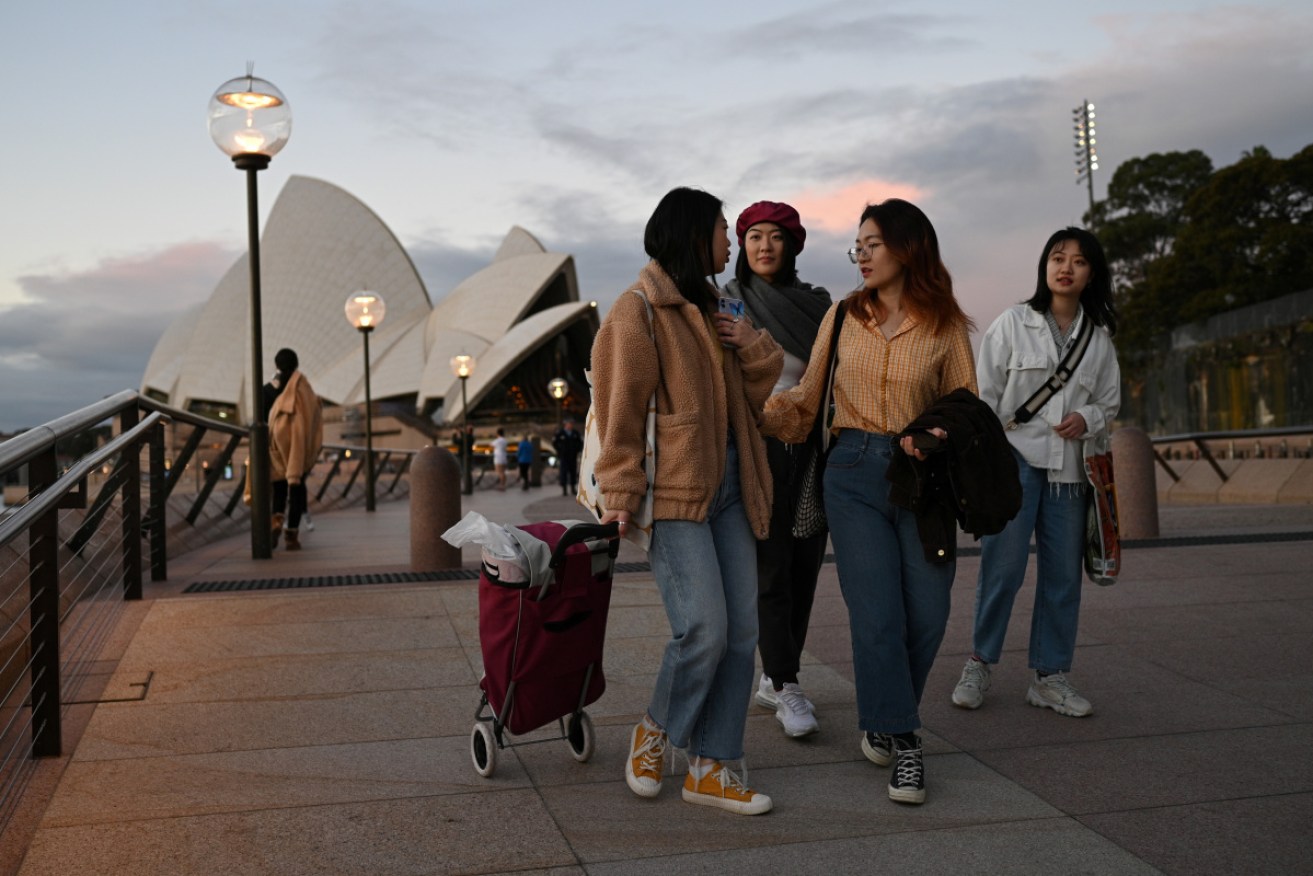It’s not just universities that will feel the loss of international students

The international student crisis is causing a population shock that is only going to get worse. Photo: AAP
The international student crisis is causing a population shock that is only going to get worse, a new report by the Mitchell Institute has found.
The education policy think tank estimates more than 300,000 fewer international students – half the pre-coronavirus numbers – will be in Australia by July if travel restrictions remain in place.
The pandemic has already cut the number of international students who would normally be in Australia by more than 210,000.
The report, Coronavirus and International Students, uses the latest data to map the impacts on international student numbers across Australia’s cities.
Where are international students now?
Since the pandemic began, the Australian government has released data showing the location of international students inside and outside Australia.
The table below compares the figures from March 2020, at the start of the pandemic, and November 2020.
The table shows total enrolments are down by 12 per cent since March 2020.
Border closures mean new students are not replacing current students as they finish their courses.
The number of Australian-enrolled international students now studying remotely from outside Australia has increased from 116,774 to 138,060.
Enrolments from China have been the most affected.
This is because travel restrictions were first imposed on people travelling from China in February. Many Chinese students were unable to enter Australia before the start of semester one in 2020 and remain outside Australia.
These data suggest Australia is facing the dual problem of fewer enrolments and fewer international students inside the country.
How will Australian cities be affected?
The Mitchell Institute has used the latest data to update previous research to explore the impact of the international student crisis on our cities.
Our research shows the location and density of the reductions in international students vary by city.
For instance, an estimated 72,000 fewer international students are living in Sydney because of the pandemic.
Shown below is a three-dimensional visualisation of where in Sydney this reduction is likely to have occurred. The higher the column, the greater the reduction.

Three-dimensional map showing the estimated reduction in international students in Sydney. Source: Mitchell Institute analysis of ABS and DHA data
The map shows inner-city regions have been the most affected. Areas with large Chinese international student populations, such as Hurstville in Sydney’s south-west and Strathfield in Sydney’s west, also show significant reductions.
Melbourne has experienced a similar reduction to Sydney – an estimated 64,000 international students. The three-dimensional visualisation for Melbourne is shown below.

Three-dimensional map showing the estimated reduction in international students in Melbourne. Source: Mitchell Institute analysis of ABS and DHA data.
Compared to Sydney, the reduction in numbers is much more concentrated in the inner city. There is also a notable reduction in Melbourne’s south-east, near Monash University’s Clayton campus.
Every major Australian city will be experiencing a significant drop in international students, although in different ways.
The tables below list the 10 areas in each state and territory estimated to have had the greatest reduction in international students to October 2020. (Click through the pages to find each state and territory.)
The interactive map of Australia below shows the Mitchell Institute estimates of reductions in population across each city because of the international student crisis. (Click on the magnifying glass icon to search for a city.)
As the crisis continues, the impact on Australia’s cities will evolve. The initial shock affected areas with large Chinese student populations. Further reductions are likely to involve students from other countries.
This will result in a more noticeable impact in areas with higher populations of non-Chinese international students.
What can be done?
The location of international students is important. These students spend in the wider economy. About 57 per cent, or $21.4 billion, of the $37.5 billion associated with the international education sector comes from spending on goods and services.
If international students are outside Australia, this will affect the many local communities and businesses that rely on them.
Trials are planned to bring international students back into Australia. This will help those whose studies have been disrupted by the pandemic.
However, it is unclear whether such efforts will be enough to reverse the downward trend in the number of international students living in Australia.
Australia’s handling of the coronavirus pandemic might also create opportunities.
Australia competes with other countries in the international education market, such as the United Kingdom and the United States.
Fewer cases of coronavirus might make Australia a more attractive study location than other countries.
Ultimately, Australia’s international education sector will look very different after coronavirus.
The emphasis that the Australian government has placed on the international education sector suggests it is not a matter of “if” international students return, but “when”.
It may also be wise to add “how” to the discussions. This is because there were concerns before the pandemic about Australia’s reliance on international student revenue.
Planning for the return of international students will ensure Australia rebuilds with a sustainable and equitable international education sector.![]()
Peter Hurley, Policy Fellow, Mitchell Institute, Victoria University
This article is republished from The Conversation under a Creative Commons licence. Read the original article.








